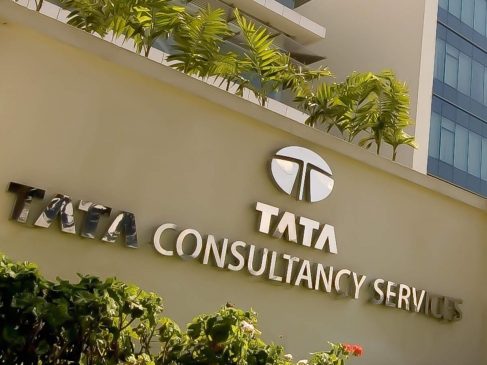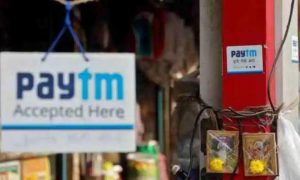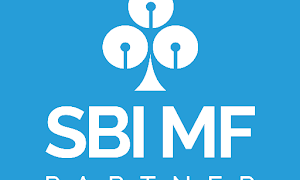TCS COO NG Subramaniam said in an exclusive interview with Moneycontrol that he had returned to the office because he felt he could organise himself better.
The silence is striking when you enter the TCS campus at Whitefield in Bengaluru. The security checks take less than a minute, the food courts are empty and there is no rush for the elevator. A building that can typically accommodate 3000-5000 people currently has around 50 people as a majority of employees continue to work from home post the Covid-19 pandemic.
TCS, which is India’s largest software firm and one of the biggest employers, wants to move to a hybrid model where only 25 percent of its employees need to spend time at the office by 2025.
Its Chief Operating Officer N Ganapathy Subramaniam is sure to be in the 25 percent, as he believes being in the office is important to get key tasks done and also a place where you have undivided attention.
NGS, who joined TCS in 1982, held many leadership positions before becoming COO in February 2017. In a freewheeling interview with Moneycontrol, he spoke about the business momentum, its bets on Electric Vehicles & the Tata super app, why the company is not worried about the war for talent and the future of work.
The first quarter obviously started off with good momentum. But India business was the Achilles heel. Now we are in the middle of the second quarter. Are you seeing a rebound in India business and overall momentum?
I can’t say that it has improved fully. We are seeing some progress but given that the people are a bit cautious about the third wave coming in, I can’t claim that it is fully recovered from India business perspective. Services like Passport Seva Kendra depend on people coming and taking passports. In TCS iON, we need to conduct the exams. Based on the examination and results published is how we get paid. Some of these things are getting delayed, and slowly picking up. But hopefully another month (for recovery), but I don’t think that we are fully back yet.
In terms of overall business, the momentum is positive. I think the US, Europe, and UK, new business and the investments that they are planning, all of that is looking alright.
When the pandemic struck, these companies had no choice but to go digital. But now with countries opening up, do you continue to see momentum for large digitisation initiatives? Are you still seeing those transformative large deals in the marketplace and if so in which sectors?
Digitisation work is progressing and the way that clients are started to invest, it is happening in multiple waves. First wave was to ensure there was resilience in digitisation so that they can continue to serve their customers online, real time. The next wave was continuing that momentum to see if we can extend the capabilities and be present in every market or every marketplace in which the customers go out and transact. If you take manufacturing, as a case in point, almost all auto vendors are looking at selling more cars. More than the autonomous vehicle and connected vehicles paradigm, I think things have moved to electric vehicles, where enormous amounts of investments are happening. Demand for electric vehicles across the globe is something that is quite well known today and this also most of the auto manufacturers have also have a sustainability agenda and moving into electric vehicles is an important shift in that direction for them right. On other types of manufacturing, be it chemicals or pharmaceuticals, people are looking at alternative supply chains, and how do I choose to develop multiple paths to getting the equipment so that they don’t get into situations where they are not able to commit to deliveries. Every manufacturing company is investing in digitisation to rework the supply chains, and build the new vendors, ecosystems, and all the corresponding changes that are required in terms of technology and operations.
With electric vehicles as a segment seeing significant investments, how will TCS tap into this opportunity? Can you share more on the kind of work you are doing in this space?
Tata Motors is doing well and we are also partnering with them on this front. Jaguar Land Rover is another customer with whom we are working as well. Whichever customers we are working with, be it Fiat Chrysler or Stellantis, a company formed by merger between Chrysler and French PSA Group, and many other customers, we are working with them on this. But are we the number one partner in each one of them?
I can’t say that we are the number one partner for everybody, because there are multiple approaches that they have. One is to develop themselves, with partners like us. The other is to develop OEMs, in which case, then we’ll have to go after and work with OEMs. So in either of these cases, I think we are well positioned. We think that particular piece of business is growing nicely for us.
Could you share more in terms of the value add you are making? Because a lot of these companies say they are not an auto company but a technology firm. From that perspective where does your role come in?
They are a technology company, alright, but they need technicians to help as well. They do some pieces and outsource some. It could be the next generation infotainment system, leveraging the connected ecosystem and how is it going to be done? Can everything be moved on to the cloud? What is the security element that goes into it? There is an enormous amount of work that is involved in product engineering, as well as software design and testing.
Could you quantify the potential market or business opportunity?
Given that it is the focus area for most car manufacturers, it is a fairly significant market. Electric vehicles on the passenger car side have been sorted out, mostly I think it’s there including battery systems and battery life. The same thing has to be done at a much higher scale for the trucks. A lot of research and development work is going on. A lot of prototypes are getting developed. Electric vehicles, while initially started off with two wheelers, and then the four wheelers on the passenger car side, I think that huge opportunity will come when it is also into the truck side. The way I see it is not going to be only for passenger cars, it has to go into the truck side eventually. In that sense our work is in terms of working with a lot of players to integrate and partner with them and also do our own research in terms of what kind of software that is required. Can we develop patrons for some of this because it’s getting software based and how do we leverage it in some way? The standards are still evolving.
At least in the next 5-10 year term, this will be a lot of work that will be evolving based on electric vehicles, connected cars, and connected vehicles. And then the business model itself is changing. People are used to buying cars. Now I think it is – use the car and leave it whenever you want to go – subscription based model that’s coming. In such cases, what is the kind of infrastructure one needs to build, what is the role of distributors, are some of the things that need to be looked at. So I think the space is getting interesting, and it’s going to take a lot of change, it’s going to go through a lot of change.
You work with group companies like Tata Motors. What is the role you will be playing in Tata Digital, which has acquired Big Basket and 1MG recently and has plans for a super app?
There’s a team working with Tata Steel, a team is working with Jaguar Land Rover, Tata Motors, and there are other group companies. But this is done on merit and we have to earn it. There is a strong, cohesive team that’s consciously going and pitching for work, like we do for any other customers. Then they go through a competitive process, and then we win. So I think we are working for a large number of Tata Group companies.
How much of the opportunity do you see within Tata Digital, which is a key focus for the Tata Group?
I won’t be able to quantify all of this, because, like any other firm, they will have a multi-vendor strategy. And all I can say is we are strong partners. In fact, originally, we are part and parcel of the entire super app development. We are also working very closely with a number of other initiatives. Even in terms of all the mergers that were happening within the group, a lot of these things are, this is very much part of it (the work we are doing with Tata Digital). For example, Big Basket and 1MG have come in and we need to bring them together.
How do you see the opportunity in telecom with 5G coming up and Tata group’s recent investment in Tejas. Do you see the investment giving you a boost as far as the telecom vertical is concerned?
I think that the group has always entered into businesses, when they felt that India needs (it) like Tata Steel, Tata Motors, which were all born like that. What I understand is that the group also chose to get into this telecom space. Primarily because the country needs it, and then the government pushes in terms of the number and the opportunity to work with Indian telcos like Airtel and BSNL. It’s a huge opportunity. So TCS will be a system integrator.
Companies may have the equipment from Tejas or others, but have to be integrated and put into place. There are other group companies that are also capable of doing that, for example, Tata Communications. So for the purpose of rolling it out into Airtel, BSNL, 4G or 5G kind of equipment, like we do internationally, we can implement, integrate, monitor it or optimise it. We will be looking forward to participating in some of these projects.
How are you managing the supply side issue? Is a lot of this happening because of the growth in IT coming back in a big way? Or is it also because of the startup boom?
I would agree that there is a great demand for talent, but supply is not constrained in India. Here it is free and available and most IT companies took it upon themselves to train people and essentially hold ourselves accountable for the skills that we all need. Two years ago, we just took it upon ourselves and said that look, we are not going to go and acquire people, we are going to go and train our people ground up. If you look at the employee pyramid, we continue to add fresh talent from the universities at the bottom. And then we keep promoting people based on their competencies. We had about 40,000-45,000 people join us last year, both freshers and laterals.
Does this mean that attrition is not as much of an issue for TCS like for other companies? How do you manage them?
We have good supply in the middle, which is where the demand is. But this is not to say that the employees are not getting lured. They are getting a lot of opportunities. Retaining them is about giving them good work, which is first. Second is, how do you make sure that they work with good people and also the environment, and also challenge in the workplace. Third thing is, giving them reasonable money and competition. It (retention) is a combination of all the three. We are not a fly-by-night operator. People recognise that so we are able to retain a reasonable number of people.
What we are seeing in the market is probably an anomaly and will be corrected in due course. But do you see that impacting pricing? Are you able to command more pricing from customers, and how is the business model changing?
We are conscious that the demand environment is good and talent is going to be important. We have consciously trained and invested in people. But if the market is going to offer a 100 percent increase, naturally, people will get lured. So it’s a choice, people leave and you cannot restrict them. So how does our business model change? ‘There’s a strong demand and it is a sellers’ environment, so I would increase the price.’ That’s not the way it works. There are industries which are still constrained. You go and ask an airline and say ‘Look, we want to do this project but it is going to cost you 20 percent or 30 percent more, because I’m paying my employees more.’ Pricing is a function of different things. Business models will change, and the way we charge people will change. People don’t want to spend on capex today (capital expenditure), they want to spend only on op-ex (operational expenditure). So where is the question of me charging on a time and material basis, say by 10 percent etc.. There are multiple models. There are people who want resources and in those cases you may be able to charge them a premium for the right skills. But a majority of the large customers where we want to have a long term partnership, they don’t want to be transactional like this. That is not the way this business works, at least our business. The way that we have built our relationship is that pricing is a function of value delivered. I don’t want to say I would increase the price every opportune time. That’s not the way that we are. To answer your question, am I going to see a pricing increase? Potentially, yes. But it is a function of the type of customers, projects and a number of other factors.
Could you share more on how fresher strategy is playing out? TCS offers higher salaries for those with digital skills. Can you elaborate?There will be some increases here and there. But 18 months ago, we said that these are the additional training programs in digital available to you. You have an offer in TCS, but if you invest your time, get yourself qualified for these skills, you will double your salary. So consciously we are encouraging people to become digitally capable in skills like full stack developers and ready for the future.
Do you see pressure on fresher salaries?
I don’t think there is a pressure on salary. Ultimately, the market is large. If I want to hire 40,000 people in India via the National Qualifier Test (NQT), we have 200,000 people registered. Why did we go for NQT? It is not that we just go and hire people based on their CV. Everything is digitised and we know exactly this person took this much time to answer this question. This module one performed well and this module he didn’t perform well. So we could actually paint a picture of your quotient map for all people who took our tests. Through this database, we know what modules people performed well and those they have not and suggest training programs available for them. So I think that the demand-supply situation is still good. It’s not alarming. I think at the entry-level, we will have absolutely no problem in hiring the talent that we need.
TCS’ attrition is one of the lowest at 8.6 percent. We have learnt that the company has sort of an unwritten rule, where you don’t hire former TCS employees…
It is not an unwritten rule. It is a very clear policy. The policy is that you (former employee) want to join (back); there are so many people who want to join. So it’s going to take quite some time for you to get in because the queue is so long back.
The other thing I want to ask is the challenge of managing 5 lakh people. Do you see TCS becoming an organisation with for example, 1 million people? And you know, so what is the challenge of managing such a huge organisation and still manage to be agile?
We might become 1 million people. People asked the same question when we were 100,000 and asked will you become 200,000. Our organisation model evolved two-three years ago. We said time had come and we needed to create sub-units. We created 150 sub-units from 30 earlier. These 150 units run as their own company with a fully empowered structure and fully empowered organisation. They go out there, they execute it, sell it and they manage the customers. We provide governance and oversight. I review all those units once a quarter not in terms of business performance, but how well they are feeling empowered, which is based on their performance. This process is scalable.
For engineers and potential employees who are reading this interview, if you have to give them three tips on how they can make it to TCS, what would you tell them in terms of skills?First is that if you have the passion, we have the time right. Second is that if you want to dream of making a career, this is the place because there are enough examples here. Third is if you want to find a career somewhere else, you won’t find a better launch pad than TCS.
I remember you saying in an earnings call, I think a quarter or two ago that you know, I seem to be working all the time when I’m working from home. Is that the reason why you returned to the office?
I felt that I could organise myself better when I was working in the office. I still believe so. Working from home offers certain flexibility, there is no doubt about it. But you have to be in the office to get some of those important things done. When you want to have undivided attention and you have few people to touch base quickly and bounce it off, I think the office is the place. In my opinion returning to the office is very important.
But you’re still standing by the 25 by 25 strategy, where you will have only 25 percent of the employees working in office by 2025?
Yes, I think you know, 25 by 25 is the foundation on which the world is talking about hybrid models. When people talk about hybrids, that’s exactly what they mean.
But do you still feel the need for such a big campus? So will you cut down on fresh investments or perhaps optimise current campuses?With the pace at which we will develop some of those will probably be slower. For example, if we take this building. It could have 3000 people working in this building. But when moving forward, taking into consideration employee safety and all the other things, we will at best have 50 percent of the workforce at any point in time. So our offices currently can operate only at 50-60 percent capacity at any point in time in terms of people coming into offices. If you take what are the roles that will remain an office, they are security guards, and canteen contractors. We can’t ask them to work from home. Likewise, even in our technology skills, infrastructure server, somebody has to reboot the server, and monitor them. But finally what customers want is the type of work that we do. So we left it to the units and the project manager whether you want to work two days a week, one week, a month, or let’s say one month, and then the next two months you go offline, it’s very different. That’s up to you to see how you want to manage this. Plus, there are always situations like separate client visits. There are some important presentations that you have to make or deliver and demonstrate it to the customer. Then I can call these people on those days. So there is a certain amount of plasticity and flexibility but on average we believe that the 25 by 25 model will pan out and I’m not in a hurry to roll up a private notice even when we announce it.



































